Click To Restart


































skip
THE BATTLE OF OKINAWA
The Battle Of Okinawa
episode
0
At the beginning of the Pacific War, the Japanese military quickly gained control over a vast territory.
But the Allied Forces, led by the U.S. military, regained control over the islands of the Asian Pacific, one after another, and penetrated the “Absolute National Defense Zone.”
The invasion of Japan loomed.
The Japanese military stationed about 100,000 troops on Okinawa, with the aim of preventing the invasion of the mainland.
Narration
![]()
![]()
Imperial Headquarters of the Japanese military reported directly to the emperor.
Its strategic plan stated that "Okinawa is the front line of defense for the imperial homeland…"
"Aim to inflict heavy casualties and wear down the enemy as far as possible."
The Thirty-Second Army was stationed in Okinawa and charged
with fighting a war of attrition to delay the expected invasion of Japan as long as possible.
The Battle Of Okinawa
episode
1
April 1st.
Under the cover of a naval bombardment of more than 100,000 shells, the American military began landing on Okinawa at 8:30 am.
It was the beginning of a merciless battle that was later described as "the most ghastly corner of hell."
It was not only the Japanese military that awaited the advancing American forces. As many as 500,000 civilians remained on the island.
Narration
![]()
![]()
The number of civilian dead was overwhelming.
On the day of the invasion, civilian deaths numbered 292.
Plans to evacuate civilians to safe havens had not been fully implemented,
and many civilians remained in the battle zone.
The Japanese military had left very few forces to defend them.
The Thirty-Second Army had been ordered by Imperial Headquarters to
wage a war of attrition,so it concentrated its limited forces around
the Army's headquarters in Shuri.
Commanding the American invasion was Lt. Gen. Simon Buckner, Jr.
He was accompanied by aides who kept an account of the unfolding battle.
Master Sgt. James MacGregor Burns was one of these Army historians.
We discovered a copy of this battle diary, which had been classified by the American military.
In the detailed reports of the conflict, one word appears repeatedly: "civilian."
The number of civilian dead was overwhelming.
The Battle Of Okinawa
episode
2
The island of Iejima is now a popular tourist destination. 70 years ago, the U.S. military attacked from the sea, the air, and on land.
Footage from April 16th records the American landing on the island.
The American objective was a large airfield on the island. Their aim was to use it as a base to launch air attacks on the Japanese mainland.
The Japanese Thirty-Second Army destroyed the airbase itself, since there weren't sufficient forces to defend Iejima.
Narration
![]()
![]()
"One hundred million glorious deaths" was Japan's slogan at the end of the war.
The idea spread that all Japanese citizens, not only the military,
should give their lives to defend the state, with the emperor at its core.
Attackers carried handmade explosives and flung themselves at the American troops, often sacrificing their lives.
The residual force of Japanese soldiers mounted the final attack on April 20th.Women on the island also joined in the attack.
40 years ago, when the postwar American occupation of Okinawa ended and many people began to talk about their wartime experiences for the first time.
They described their clear memories in vivid accounts.
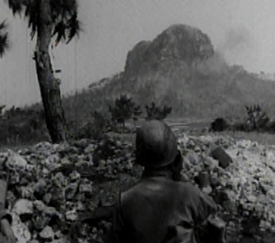
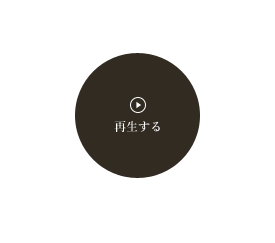

![]()
Female,
then17
![]()
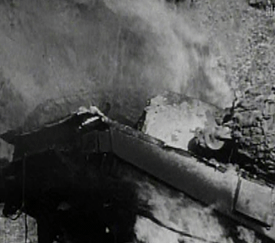


![]()
Female,
then17
![]()



![]()
Female,
then16
![]()



I wanted to join the command unit in a raid.
On the night of the 20th,we all drank Imperial sake,
and said we'd die, killing as many Americans as possible.
There were children with us.
A baby was hit and died on his mother's back.
Many died in the final attack.
They said we'd be honored like soldiers at Yasukuni Shrine.
We believed we all had to die, so we weren't concerned.
I think we felt happy at the time.
You must die for the Emperor.
We'll all give our lives for the country.
We were taught from an early age that being captured was shameful.
That's all we knew.
![]()
![]()
![]()
![]()
![]()
The Battle Of Okinawa
episode
3
The most intensive fighting between Japan and the United States began soon after
the U.S. Forces landed on the main island of Okinawa on April 1st.
More than 13,800 civilian deaths were recorded by late April.
During one month after that, in the battle over Shuri,
the civilian death toll rose to more than 21,600.
Many of them were residents of Okinawa drafted by the military just before
the Battle of Okinawa under the system called defense conscription.

Defense conscription is a system whereby the military drafts local residents to supplement its forces in wartime.
In the final stages, junior-high school boys aged 14 and older were subject to the system.
In Okinawa, more than 22,000 people were conscripted in this way.
This amounted to about 20 percent of the fighting force deployed on the main island of Okinawa.
The policy was also called "absolute mobilization."
Throughout Okinawa, the integration of the military and civilian sectors was propelled forward.

This was the only battle of the Pacific War fought on densely populated Japanese territory.
But the casualties were so extensive that it has been difficult to construct a comprehensive picture of what took place.
We recently obtained access to documents that provide important clues to this history.
They are the results of the only survey ever conducted by the Okinawan government to document wartime deaths on a household-by-household basis.
Because they contain private information, the documents are not available to the public.
We obtained records of where and when people died, minus their names.
We digitized this massive amount of information for analysis.
The data covered over 80,000 civilians, excluding those for whom the date and place of death is undetermined, and also excluding Okinawans who were drafted into military service.
The analysis reveals how civilian deaths accumulated, by tracking the shifting patterns of their occurrence on a day-by-day basis.



After sunset, we were sent on a raid, mostly Okinawans.
We had no guns, just bamboo spears and hand grenades.
We were told to carry the hand grenade,
and detonate it after we crawled under a tank.
We were sent out to die.
I carried ammunition a number of times.
At night we would plant mines. We made rice balls, right near the entrance to the cave.
A shell hit right there.
It hit people standing just behind me. I saw 2 or 3 women…
with their heads gone, their bodies severed.
From taped accounts of Japanese soldiers and residents, it's been revealed that many residents,
not conscripts, were also pushed into taking part in raids on the battlefront.
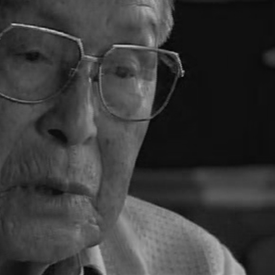
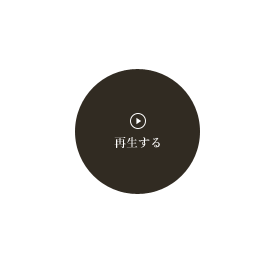

![]()
Army Private
Toshinori Hamamoto
![]()
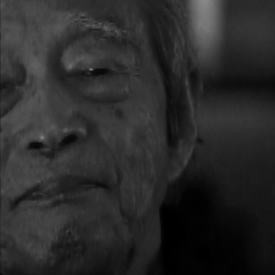


![]()
Former captain
Koichi Ito
![]()
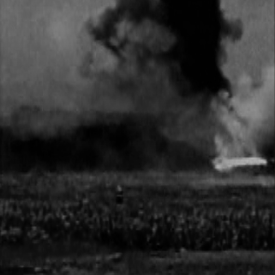


![]()
Male,
then29
![]()
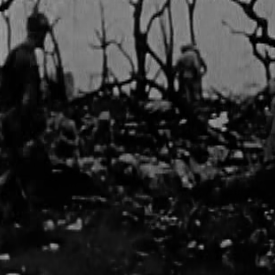


![]()
Tokeshi Mitsuko,
then 18
![]()


By May 14, the American forces were nearing the Japanese headquarters in Shuri.
There, an intense battle took place in which control of a strategic position called Sugarloaf Hill, changed hands 11 times.
According to American military records, the Marine Corps suffered some 4,000 casualties.
The archival footage from around this time shows soldiers who were suffering psychological disorders.
Narration
![]()
![]()
When we examined footage taken near Sugarloaf Hill with an expert on these archives,
we discovered a shocking scene.
In the area where the American forces are concentrating their fire,
a number of civilians appear.
The historian notes that soldiers would never expose themselves to rifle fire in this manner.
We found a former Marine who survived the battle of Sugarloaf Hill.
Former corporal Joe Drago was 19 when he was sent to Okinawa.
He says it was difficult to distinguish between Japanese soldiers and Okinawan civilians,
and he was suspicious of everyone.
Incidents occurred that deepened the suspicions of the U.S. forces.
In the midst of the Battle of Okinawa,
Army intelligence released an analysis of Japanese army tactics.
Included was a photograph of a Japanese soldier wearing
a kimono to disguise himself as a civilian.



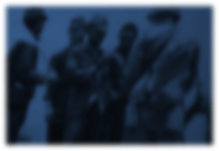

The indiscriminate character of the American assault turned ever more extreme.
When soldiers discovered an underground cave, they closed off avenues of escape
and used flamethrowers to incinerate the interior of the caves.
Often there were civilians among those in the caves.



A tank came within 150 meters and blew up the cave entrance.
They doused the cave with a flamethrower.
An uncle was burned alive.
He crackled.
Dozens of people were killed like that.
The woman who gave the account of her experience in the cave is Mariko Ichi,
now 91 years old.The image of American soldiers,
tinged with madness, has never left her mind, she says.
May 31.
The Japanese headquarters in Shuri fell to the Americans.
The outcome of the fierce fighting between the U.S.
and Japan was effectively decided.
Master Sgt. Burns had witnessed the death of soldiers and innumerable civilians.
![]()
![]()
![]()
![]()
![]()
The Battle Of Okinawa
episode
4
![]()
![]()
![]()
The Thirty-Second Army moved its headquarters to
the southern tip of the main island of Okinawa.
Defense conscripts and others who had been mobilized,
along with civilians who had no place to shelter,
poured into the south, which was soon flooded with people.
When we examine the data of the 82,074 civilian deaths...
we discover that more than 46,000 of these civilians died in June,
after the fall of Shuri.
Despite the fact that the outcome of the battle was already determined,
nearly 60 percent of the deaths occurred during that month.
Casualties were especially high during the week preceding
the cessation of organized Japanese resistance on June 23rd.
On one day alone, some 5,500 people were killed.
By June 6th, U.S. forces had launched a mopping-up operation in the south.
The Battle of Okinawa had entered its final stage.
Naval forces circled around to the south and began an intense bombardment from the sea. Casualties increased rapidly.
Civilians searched for shelter, as the steady rains of June continued to fall.
From above, the American military poured down a ceaseless rain of artillery shells.



Japanese soldiers came and told the older women to leave.
"You order them out,
but shells are falling," I said.
"You're telling them to go out and get themselves killed."
But the soldiers said, "Shut up!"
and threatened us with pistols.
If a baby cried, we might be found, so mothers were forced out.
Can humans really do that? I thought.
If a baby cried too much, they had to go.
There was a boy about 6 who cried out for his mother.
"It's for his sake," his grandparents said,
and they covered his mouth. They pressed him so hard, he died.
We were so terrified, we were shaking.
The only spots that provided protection were underground tunnels and the natural caverns that dotted the hillsides.
People's testimonies reveal mounting tragedies.
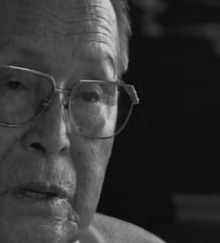
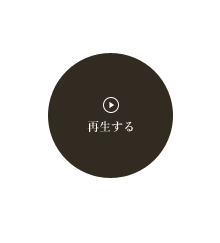

![]()
Army Private
Toshinori Hamamoto
![]()
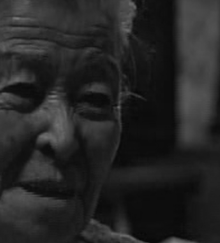


![]()
A resident,
Mitsuko Tokeshi
![]()
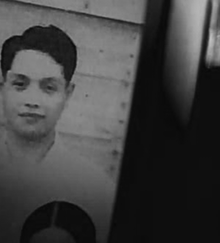


![]()
Male,
then 33
![]()
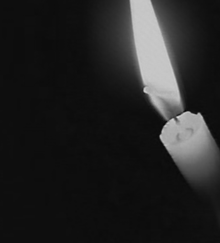


![]()
Femali,
then 18
![]()
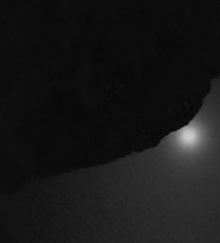


![]()
Femali,
then 18
![]()
At the southernmost Kyan Peninsula, civilians who had no place
to take refuge threw themselves off the cliffs, one after another.
Former corporal Glenn Nuyt participated in the mopping up operations in southern Okinawa.
The scenes he saw then are burned into his memory.
For months afterwards, former captain Koichi Ito
hid in an underground cave and engaged in guerrilla warfare.
He didn't surrender to the Americans until after the war ended, in late August.
As she was moving from one cave to another, serving the Japanese military,
Mitsuko Tokeshi lost her sister,
two years older, to a shell attack.
Even now, she is still asking,
"Why did we Okinawans have to suffer such an agony?"
The American battle historian, Master Sgt. James Burns.
died in 2014, at the age of 95.
His former wife, Janet, told us about how he was after the Battle of Okinawa.
![]()
![]()
![]()
![]()
![]()
![]()
![]()
GAMA 360°
All the records of the Battle reported in virtual reality
There are numerous natural caverns, called "gama," throughout Okinawa.
In the Battle of Okinawa, residents and Japanese soldiers used them as their refuges and field hospitals.
Various tragedies took place there.
Some of the caverns will be shown in images of stunning 360-degree environments with the technology of virtual reality.

Please look at the latest browser

Copyright NHK(Japan Broadcasting Corporation)All rights Reserved.
Number of deaths
0








